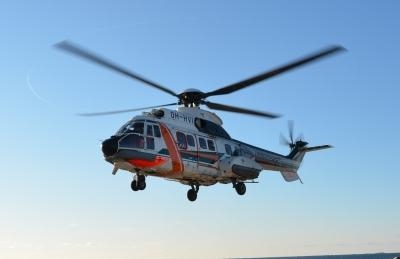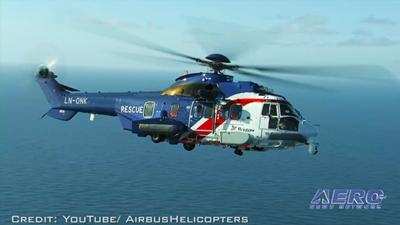Tue, Jul 11, 2017
Move Follows Extensive Investigation, Testing And Changes To The Helicopter And Its Maintenance
The U.K. and Norwegian aviation authorities have set out plans for the lifting of operating restrictions on H225LP and AS332L2 helicopters. The restrictions were imposed following the fatal accident of a H225 near Turøy in Norway in April 2016. The two helicopter types, popularly known as Super Pumas, were restricted from being used commercially by U.K. and Norwegian operators.

Both the U.K. Civil Aviation Authority and the Civil Aviation Authority of Norway have remained in close contact with EASA; U.K. and Norwegian operators; and with the manufacturer, Airbus Helicopters which has developed the modifications and enhanced safety measures for the type. Despite the helicopter being released back in to service by EASA in October 2016, the restrictions remain in place in the U.K. and Norway until these further enhancements have been made.
Changes and modifications made to the helicopter and its maintenance by Airbus Helicopters include:
- Change in the design by removal of the components that were susceptible to premature deterioration.
- Earlier replacement of components
- Design change to introduce an improved maintenance inspection method to detect any deterioration at an early stage.
- More frequent inspections
- Reduction in the thresholds for rejecting components based upon early signs of any deterioration.

The U.K. CAA said that helicopters will not begin flying immediately. A plan of checks, modifications and inspections needs to be undertaken before any flights take place. It will also be for operators and their customers to decide whether they wish to re-introduce the helicopters to service. In order to resume operations individual operators will need to supply safety cases to ensure that they have all the necessary measures (procedures, processes, tooling and training) in place for a return to service.
"This is not a decision we have taken lightly. It has only been made after receiving extensive information from the Norwegian accident investigators and being satisfied with the subsequent changes introduced by Airbus Helicopters through detailed assessment and analysis," said John McColl, Head of Airworthiness at the U.K. CAA.
“The safety of those who travel on offshore helicopter flights is a key priority for both the U.K. and Norwegian aviation authorities. We would not have made this decision unless we were convinced that the changes to the helicopters and their maintenance restore the required airworthiness standards.
“We continue to work with the helicopter operators, the offshore industries, international regulators, unions and pilot representatives to enhance offshore safety standards still further and all these parties are actively involved in ongoing discussions.”
(Source: U.K. CAA news release. Image from file)
More News
Also: ANOTHER Illegal Drone, KidVenture Educational Activities, Record Launches, TSA v Shoes The Senate confirmed Bryan Bedford to become the next Administrator of the FAA, in a ne>[...]
Also: Sully v Bedford, Embraer Scholarships, NORAD Intercepts 11, GAMA Thankful Middle Georgia State University will be joining the Federal Aviation Administration’s fight ag>[...]
Also: DarkAero Update, Electric Aircraft Symposium, Updated Instructor Guide, OSH Homebuilts Celebrate The long-awaited Sonex High Wing prototype has flown... the Sonex gang tells >[...]
Also: Sully v Bedford, Embraer Scholarships, NORAD Intercepts 11, GAMA Thankful Middle Georgia State University will be joining the Federal Aviation Administration’s fight ag>[...]
30-Year USCG Veteran Aviator Focusing On Member Benefits The Vertical Aviation International Board of Directors announced its new leadership officers in April, and all began their >[...]
 Airborne 07.11.25: New FAA Boss, New NASA Boss (Kinda), WB57s Over TX
Airborne 07.11.25: New FAA Boss, New NASA Boss (Kinda), WB57s Over TX Airborne-Flight Training 07.10.25: ATC School, Air Race Classic, Samson School
Airborne-Flight Training 07.10.25: ATC School, Air Race Classic, Samson School Airborne Affordable Flyers 07.03.25: Sonex HW, BlackShape Gabriel, PRA Fly-In 25
Airborne Affordable Flyers 07.03.25: Sonex HW, BlackShape Gabriel, PRA Fly-In 25 Airborne-Flight Training 07.10.25: ATC School, Air Race Classic, Samson School
Airborne-Flight Training 07.10.25: ATC School, Air Race Classic, Samson School Rick Kenin New Board Chair of VAI
Rick Kenin New Board Chair of VAI




